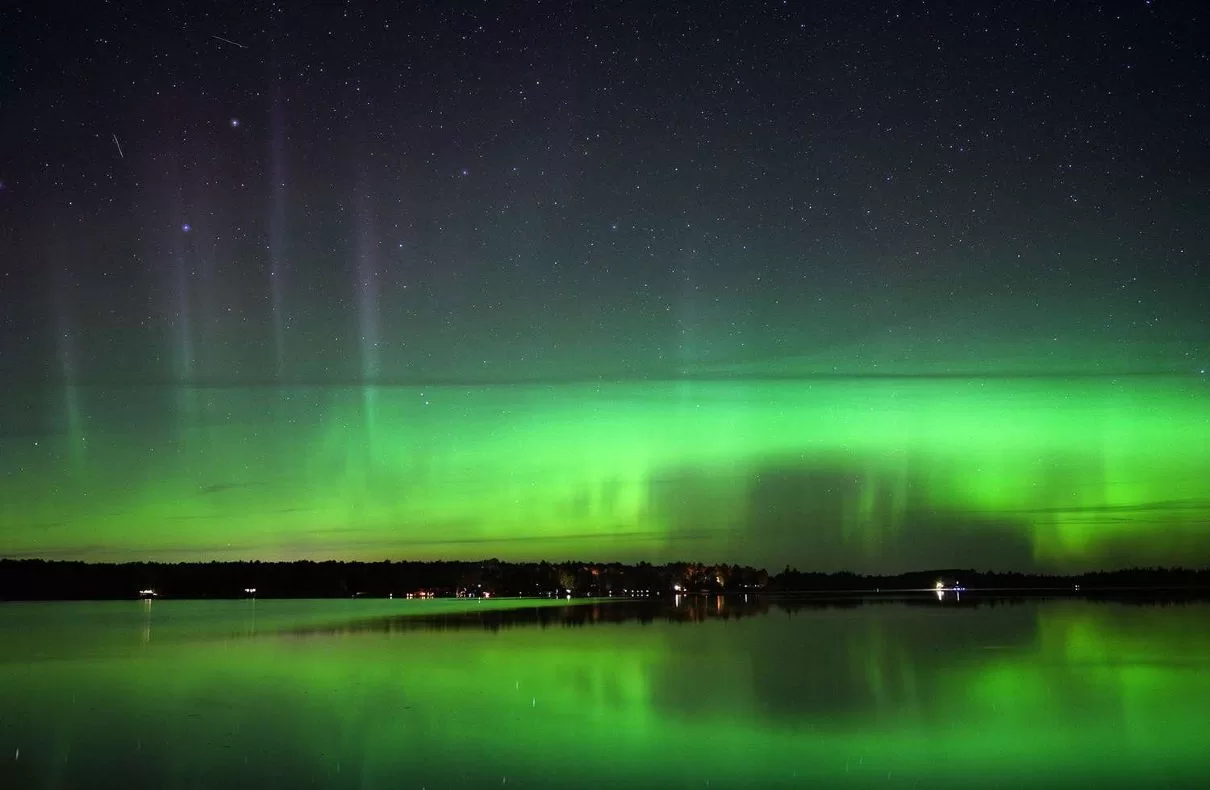The U.S. Space Weather Prediction Center predicts a strong aurora borealis in much of Alaska and Canada on Saturday night.
A possible, but likely less intense, aurora borealis may also be visible over Montana, North Dakota, Minnesota, Wisconsin, and Michigan’s Upper Peninsula.
The best viewing time for the northern lights is usually between 10 PM and 3 AM. However, as long as it is dark and the skies are clear, there is always a chance to see the aurora.
The northern lights typically illuminate the night sky at high latitudes, but during intense periods of solar activity, they can occasionally be spotted farther south than normal.
Some of the best places to see the northern lights in the U.S. include: Washington, Wyoming, Maine, Fairbanks, Alaska.
That assertion is based on space weather models produced independently by the National Oceanic and Atmospheric Administration and NASA. The former’s Space Weather Prediction Center has issued a three-day forecast that predicts for Saturday a G1 magnetic storm from 15:00 UTC (10:00 a.m. EST) with a G2 magnetic storm from 18:00-03:00 UTC (13:00-10:00 p.m. EST). A G1 is predicted to follow until -6:00 UTC (01:00 a.m. EST).
So, anyone in northern U.S. states looks set to have the possibility of aurora in the northern skies from darkness through midnight. If you can, get away from light pollution and have a manual camera on a tripod that can take long exposure images (try f2.8-4, ISO 1600, 20 seconds).
The culprit is another coronal mass ejection, a cloud of magnetic fields and charged particles from the sun that streams into space at up to 1,900 miles (3,000 kilometers) per second. Crucially, this one is headed toward Earth.
Displays of the aurora are caused by events that super-charge the solar wind, a flow of charged particles from the sun. As the particles collide with Earth’s magnetic field, they accelerate down its magnetic field lines. They produce an oval of green and red around our planet’s poles.
When solar activity is high—as it is right now—that oval expands. It’s common to see the aurora from the Arctic Circle, at around 65- to 70-degree north latitudes, in regions like Alaska, northern Canada, Iceland, Lapland (northern Norway, Sweden and Finland) and northern Russia.
When solar activity is high—as it is right now—that oval expands, with the aurora being visible at lower latitudes.
The sun is currently nearing the peak of its present solar cycle, which is proving to be much stronger than the last one. A solar cycle lasts roughly 11 years. The SWPC recently published an update to its prediction for the current solar cycle, pinpointing the height of the sun’s activity—called solar maximum—to occur between January and October 2024.

